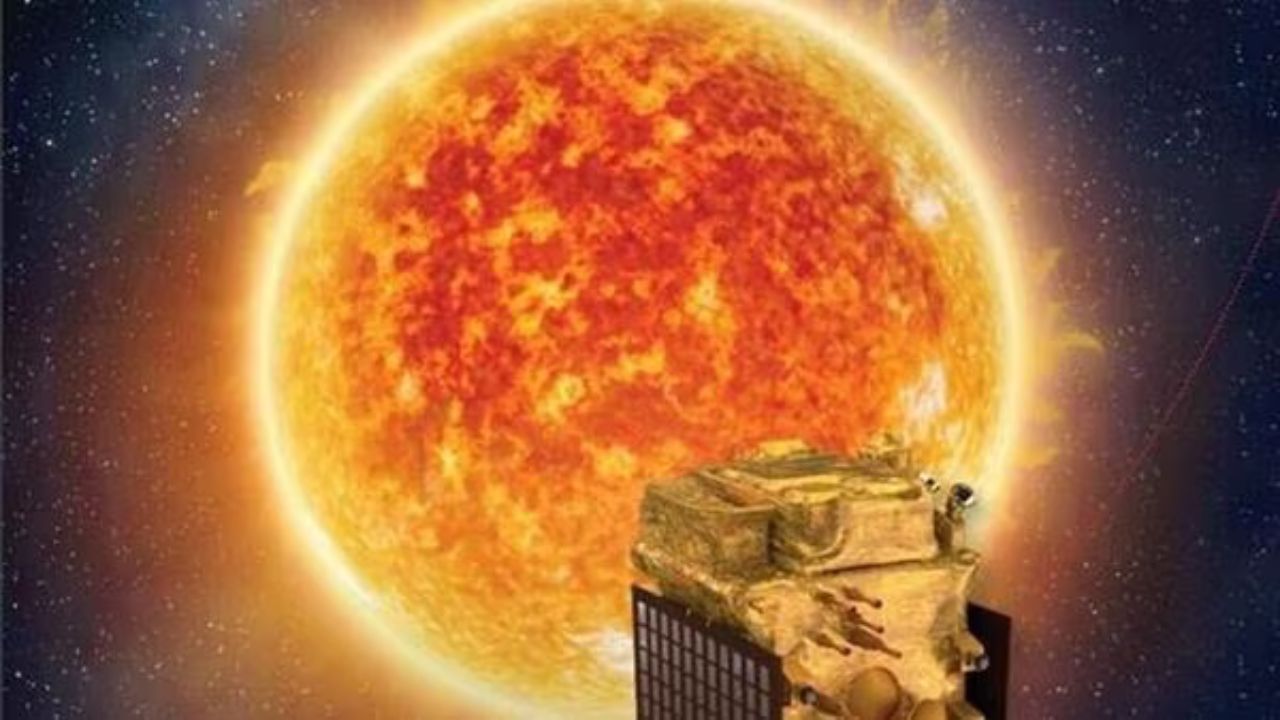In a groundbreaking achievement, the Indian Space Research Organisation (ISRO) successfully executed the final manoeuvre to position its Aditya-L1 space probe into a halo orbit around the Sun-Earth Lagrange Point 1 (L1). The solar observatory is now situated approximately 1.5 million kilometers from Earth, marking its final destination. Aditya-L1 is poised to embark on a comprehensive five-year mission to study the Sun, with the potential to unlock critical insights into solar phenomena.
The meticulous orbital placement, known as the halo orbit insertion (HOI), demanded precise navigation and control. This involved constant monitoring and adjustment of the spacecraft’s speed and position using onboard thrusters. The culmination of the intricate HOI manoeuvre was marked by a brief firing of control engines, securely situating Aditya-L1 in a periodic halo orbit. This orbit ensures an uninterrupted view of the Sun, residing on the continuously moving Sun-Earth line with an orbital period of approximately 177.8 Earth days.
The Lagrange Point 1 (L1) was chosen for its strategic advantages, including a smooth Sun-spacecraft velocity change suitable for helioseismology. Additionally, being outside Earth’s magnetosphere allows for ‘in-situ’ sampling of solar wind and particles. Continuous observation of the Sun and uninterrupted communication with ground stations are further ensured in this orbit.
Aditya-L1, crafted at the UR Rao Satellite Centre (URSC) with contributions from various ISRO centers, carries payloads developed by prominent institutions such as the Indian Institute of Astrophysics (IIA) in Bengaluru, Inter-University Centre for Astronomy and Astrophysics (IUCAA) in Pune, and ISRO itself.
To meet the requirements of the HOI parameters, two trajectory corrective manoeuvres (TCMs) were conducted on October 5 and December 14. Rigorous testing during the pre-commissioning phase confirmed the satisfactory performance of all payloads.
The suite of Aditya L1 payloads is expected to provide crucial information to understand various solar phenomena, including coronal heating, Coronal Mass Ejections (CME), pre-flare and flare activities, and the dynamics of space weather. The information gathered will contribute significantly to our comprehension of the Sun’s influence on Earth and space.
Studying the Sun is imperative due to its proximity and its role as the primary source of energy in the solar system. Aditya-L1 will also enhance our understanding of space weather, where the Sun constantly influences Earth with radiation, heat, and a constant flow of particles and magnetic fields.
ISRO emphasizes that space weather, characterized by changing environmental conditions in space, has significant implications for technology in space. The solar wind and other solar events can impact the functionality of space assets, making it crucial to understand and predict these phenomena.
The Aditya L1 mission is equipped with a range of payloads designed to capture diverse aspects of solar activity. The Visible Emission Line Coronagraph (VELC), Solar Ultra-violet Imaging Telescope (SUIT), Solar Low Energy X-ray Spectrometer (SoLEXS), High Energy L1 Orbiting X-ray Spectrometer (HEL1OS), Aditya Solar wind Particle Experiment (ASPEX), Plasma Analyser Package (PAPA), and Magnetometer (MAG) are among the instruments on board.
The successful trajectory of Aditya-L1 has not gone unnoticed on the global stage. NASA Scientist Dr. Amitabha Ghosh expressed admiration for India’s scientific achievements, stating that India is now a significant player in various scientific domains. The Aditya L1 mission represents a remarkable milestone in India’s space exploration journey, marking a transition from lacking a planetary science program to standing at the forefront of solar research.
As Aditya-L1 embarks on its mission to unravel the mysteries of the Sun, it not only signifies a technological triumph for ISRO but also underscores India’s growing prowess in the field of space exploration. The data gathered by Aditya-L1 is expected to contribute substantially to our understanding of the Sun’s dynamics and its impact on space weather, laying the foundation for future advancements in solar science.

